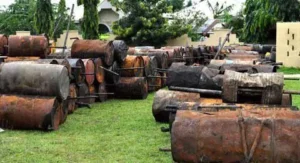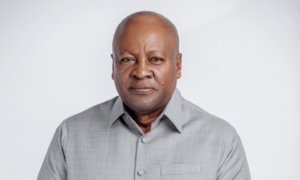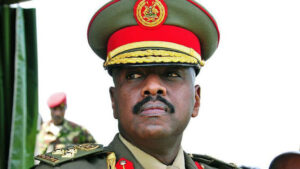
Police and protesters clashed in various parts of Kenya during protests called by opposition leader Raila Odinga over the high cost of living.
Transport was paralysed in most parts of the country as operators of public service vehicles joined the protest.
The operators blocked several roads in different towns, criticizing the government for directing mandatory retesting of drivers and increasing the cost of fuel.
Two weeks ago, the Energy and Petroleum Regulatory Authority (EPRA) defied a court order suspending implementation of the Finance Bill, which doubles value added tax on petroleum products.
The city center in Nairobi and other towns remained deserted for a better part of the day as businesses remained closed and commuters opted to avoid the area.
Anne Njoki, who owns a small shop in downtown Nairobi, told The Africa Report that she decided to remain home for safety reasons. “It’s true, life is unbearable. Ruto should listen to ordinary Kenyans,†she said.
In Kirinyaga, an angry protester said: “We are tired, the price of maize flour is higher than a cooking pot.â€
The Kenya Private Sector Alliance, an umbrella body of local investors, is calling for talks between Ruto and Raila, saying the country is losing up to KSh3bn ($21.2m) in revenue during protests.
However, according to Trade Minister Moses Kuria, the protests are economic sabotage by the opposition, but he says “the opposition won’t delay our agenda as [the] Kenya Kwanza Governmentâ€.
Police on the spot
On Wednesday, some protesters vandalised a section of the Nairobi Expressway as others engaged police officers in running battles in different parts of the country.
53 children were caught in the melee and had to be hospitalised after tear gas was thrown inside their classroom during the protests.
The Kenya National Commission on Human Rights (KNCHR) has accused the police of using excessive force against peaceful and unarmed protesters, after six people were killed on Wednesday.
“KNCHR continues to monitor with concern the human rights violations & violence perpetuated in the context of the ongoing demonstrations including killings, arbitrary arrests,†KNCHR said in a statement.
The National Gender and Equality Commission (NGEC) has since demanded for investigations to be conducted into the tear gas incident at the school in Nairobi.
Reports from the police and human rights defenders indicate that several protestors were killed in Mlolongo and Kitengela towns, where security officers battled protesters the whole day.
Other deaths were reported in Emali, a town in the southern part of the country and Sondu in the western region. On 7 July during similar protests, six people were reported to have been shot dead by the police.
However, in a statement, Security Minister Kithure Kindiki castigated the opposition for inciting protesters, adamant that the authorities will deal with them firmly in accordance with the law.
“Raila Odinga is the architect of lawlessness and impunity,†said the minister.
Raila defiant
Raila has however vowed to lead more protests against President Ruto’s policies.
“We shall not move on, until Ruto listens and respects the people,†he said, accusing the government of hiring goons to attack and shoot protesters.
“Kenyans deserve a good deal, not bullets and tear gas,†he said.
Martha Karua, who was Raila’s running mate in the 2022 elections, led demonstrations in Meru town within the Mount Kenya region, a Ruto stronghold.
According to Edwin Kegoli, a political analyst, those who voted for Ruto are now participating in the protests, an indication that they too have lost hope in the president.
“The people are now showing their anger towards Ruto. The protests are slowly being taken [over] by the ordinary people from the opposition,†he tells The Africa Report.
Â



